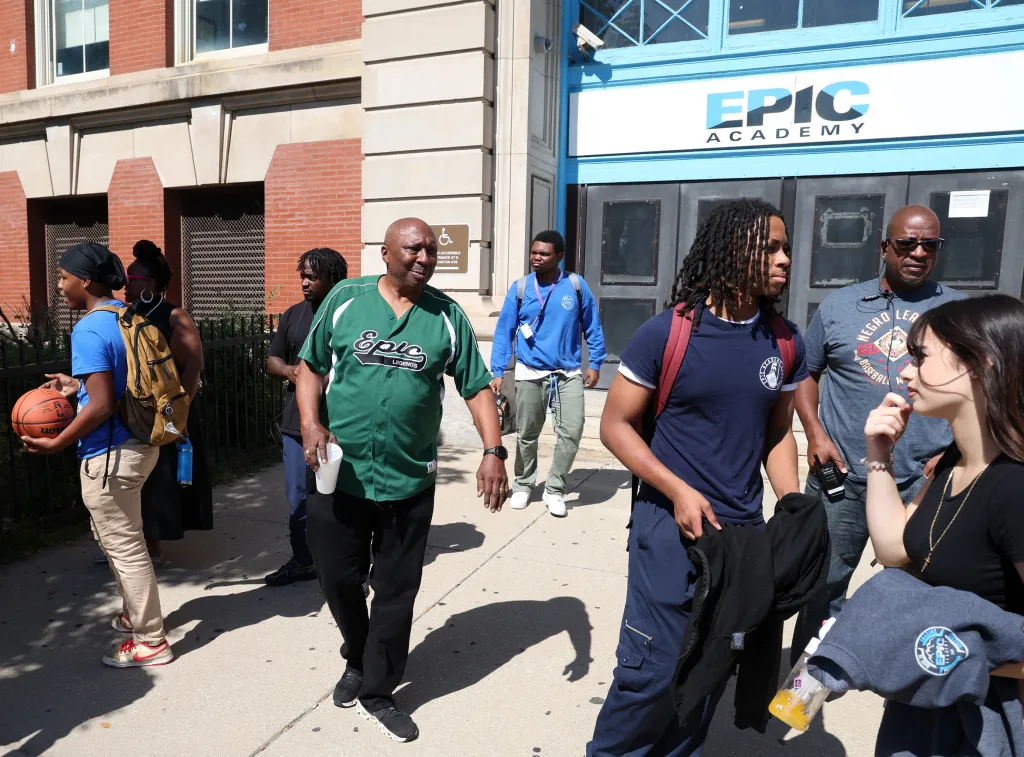
If EPIC Charter school closes at the end of the academic year, it would become the 15th charter school to close due to financial mismanagement and the inability to attract students over the last six years. It wasn’t until we had a mayor committed to quality education and a board beginning to provide oversight that the extent of issues in charter schools has come to light.
The reasons charter operators give for the closures range from lack of funds, low achievement or their outright refusal to recognize their employees’ vote for a union, as was the case at Hope Learning Academy.
There are some who will equate what is happening at charters with challenges in the rest of the Chicago school district, but the two are not the same. Before allowing any airtime to those who will argue for another round of disruptive school closings in Black and brown communities, it would behoove us to review the last time we had this conversation.
In the early 2000s, then-Mayor Richard M. Daley initiated a dramatic restructuring of schools, eliminating unionized neighborhood schools and replacing them with privately managed charter schools with citywide attendance boundaries that would be funded by taxpayer dollars but run by entrepreneurs instead of public servants. They called their privatization effort “Renaissance 2010” and based it on a blueprint developed by the elite business interests of the Civic Committee of the Commercial Club of Chicago. In their 2003 report “Left Behind,” the wealthiest and most powerful corporations in Chicagoland called for school closings and privatization to address poor academic performance and underenrollment.
The business community, Chicago’s mayor and both political parties stoked a moral panic and faux outrage around low standardized test scores to justify the extraordinarily disruptive actions.
In 1997, Paul Vallas as CEO of Chicago Public Schools forced the predominantly Black faculty and staff at Englewood High School to reapply for their jobs. A few years later, when I was a teacher there, Arne Duncan, then CEO of CPS, claimed the teaching staff created a culture of failure. He blamed us, educators working under impossible conditions, instead of the denial of the resources our students needed that were standard in whiter and wealthier areas of the city. He did so without any reference to the upheaval occurring in the neighborhoods students were growing up in, dislocation of union jobs, shuttering of industry and mass unemployment. Capital flight, precipitous displacement of Chicagoans and their experience of violent crime in the 1980s and ’90s called for abandonment rather than support and investment in the eyes of the charter boosters.
Then, in 2005, Duncan acted on his assessment by closing the school in phases, firing the entire staff and forcing us to reapply for jobs at other schools. The disrespect, disruption and disorganization implemented at Englewood and other schools, combined with the proliferation of charters, drove two phenomena at CPS. First, it slashed the number of Black educators in Chicago, reducing our representation in CPS schools by over 50% over the last 20 years. Second, it caused our union to redouble efforts to protect public education for Chicago’s children, committing to organize and become a counterforce to the billionaire agenda wreaking havoc on our schools.
It was during this era that billionaires such as the Walton family and Bill Gates invested heavily to propagandize and promote charters as the gold standard of education reform. It was sold to Chicagoans as a silver bullet for better education in our city. The answer was simple. Take the public out of Chicago Public Schools.
But now, 20 years into the experiment those entrepreneurs and their investors waged on our children, the wheels are falling off. Despite the best efforts of many educators at charter schools, the charter model continues to deliver chaos. Enrollment in charters is dropping. Their costs are overrun with duplicative management and administrative fees that replicate what CPS already provides. In several cases, they are using public funds more for real estate deals than for educating children. And now, with Donald Trump in office, their boosters are doubling down, demanding the full-scale dismantling of public education through voucher schemes. For those not sitting on the charter companies’ corporate boards, the shine has rubbed off the so-called charter miracle.
The two decades of charter proliferation in which Chicago approved approximately 200 public school closings and opened 193 privatized schools now shows where the district went wrong. It should have committed to a districtwide standard of equity and equal access in every neighborhood.
This period of school disruption — especially Rahm Emanuel’s massive closure of 50 schools in one year in 2013 — created incalculable harm by exacerbating violence and displacement. Worse, it greatly undermined confidence in one of our most treasured public institutions, laying the groundwork for similar attacks that the Department of Government Efficiency is waging now on national parks, the Department of Education and other federal-level agencies dedicated to the public good.
But Chicago has a better option and is embarking on a new direction. In April 2023, a majority of Chicago voters opted to elect a new mayor, Brandon Johnson, an educator and Chicago Teachers Union organizer who had been a key player in the fight against school closings and austerity. His election was a testament to the damage done by school closings and the rejection by voters of the bipartisan right wing and neoliberal school agenda.
Now, with a growing number of charter schools deciding on their own to stop serving students, we have an opportunity to return to a policy standard that grants the same high-quality public education to every neighborhood and ZIP code.
Students displaced from EPIC should be welcomed with open arms at South Shore International College Preparatory High School, a thriving CPS-run school in the neighborhood. And their arrival should be a catalyst to reopen the school’s library to make their experience there even better.
We can now exorcise the false promise of “improving school communities by destroying them” from our policy lexicon once and for all.
It is up to a new set of leaders in Illinois to join the trend of other states to bring forth an era of investment and support for a true sustainable community school district. Chicago’s families deserve the stability of public school and city planning that fosters equity and access, not the competition and hunger games of the past.
Stacy Davis Gates is president of the Chicago Teachers Union.



